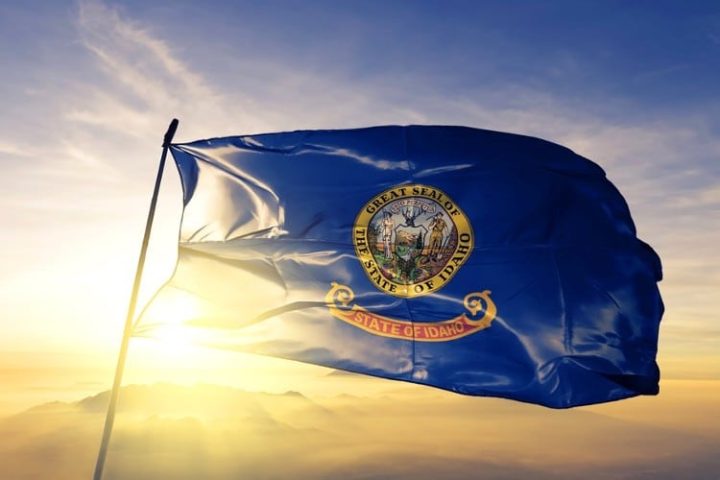
Another Oregon county will take up the question of joining the State of Idaho in an attempt to join a state that aligns closer to its own political ideology. Josephine County in southwest Oregon became the latest county to put the question on the ballot, joining Douglas and Klamath Counties to consider the non-binding measure in May of this year.
Thus far, eight rural Oregon counties, out of the state’s 36 counties, have already voted to consider the measure, with Harney County becoming the latest to study the move in November of last year with 63 percent of the vote.
Douglas County previously voted against moving to Idaho in November of last year. Wallowa County also voted to stay in Oregon last year.
Should the three rural counties in May vote with the other eight who have voted to abandon Oregon, the boundaries of so-called Greater Idaho could extend from Idaho’s current border all the way to the Pacific Ocean.
According to Mike McCarter, the president of Move Oregon’s Border for a Greater Idaho, the ballot question in Josephine County will read, “In your opinion, should Josephine County, along with other rural counties, separate from Oregon and become part of Idaho?”
The movement began back in 2015 when Union County resident Grant Darrow expressed his dismay about how rural Oregon residents felt about the direction that the population centers of the state, such as Portland, were taking the state politically.
“Rural Oregonians in general and East Oregonians in particular are growing increasingly dismayed by the manner in which Oregon’s legislature and Oregon’s urban dwellers have marginalized their values, demonized their lifestyle, villainize their resource-based livelihoods, and have classified them as second class citizens at best,” Darrow said. “All the while they cover Oregon’s most fertile and well-watered farm ground with urban sprawl, gangs, illegal aliens, homeless camps, welfare tramps and touchy-feely politics that add little or no value to rural lifestyles. Meanwhile, Oregon’s rural residents carve out a resource-based living on marginal farm ground and the leftovers of Oregon’s economic growth, infrastructure, and technological innovation.”
“We are gaining support,” Darrow said recently. “This is an exciting time.”
The Oregon counties coveted by the Move Oregon’s Border for a Greater Idaho movement contain only about 21 percent of the state’s population, but more than 70 percent of Oregon’s land area. Adding those counties would make Idaho very large indeed.
“You add those rural counties and that area to Idaho’s current area, it would make Idaho the third largest state in the union after Alaska and Texas,” McCarter said.
Idaho residents appear to be narrowly on board with the idea based on the results of a Trafalgar poll done in November of 2021. Fifty-one percent of those polled approved of the idea, while 35 percent opposed the plan. Fourteen percent were undecided. Republicans favored the proposal 59 percent to just 29 percent opposed.
Many Idaho politicians are on board with adding the Oregon counties.
“We as Idahoans should be engaged. Why wouldn’t we want to have a conversation when we’re talking about water and resources,” said Idaho State Representative Barbara Ehhardt (R). “You know, Coos Bay … that’s a deep water port that’s not even being used because of the conservationists in Oregon but is something we would use, so, it’s a good conversation, and that’s something I’m helping to try to promote, and help us move forward and have.”
Coos County is one of the Oregon counties coveted by the Greater Idaho movement, but has not yet voted on the measure.
Oregon, of course, is less enthusiastic about the measure, but the margin is closer than one might think. A July 2021 poll conducted by the Oregon Values and Beliefs Center found that 42 percent of Oregonians opposed the proposal, with 38 percent believing that it should be left up to the individual counties whether they move or not. Twenty percent of Oregonians, according to the poll, are undecided on the issue.
Ultimately, the success of the plan seems unlikely since both legislative houses in Oregon and Idaho, as well as the U.S. Congress, would need to sign off on the measure.
Still, the movement, despite long odds, keeps moving forward. Move Oregon’s Border for a Greater Idaho also has its eyes on some Northern California counties, although it has not yet put forth a ballot measure in those counties.
The Greater Idaho movement echoes other secession-type movements in the United States. Three western Maryland counties are looking to find a better political fit for their citizens in West Virginia, while New Hampshire was considering a law which would codify language allowing it to secede from the United States.
Among the various secession-type movement in the United States, however, the Greater Idaho movement has the distinction of being labeled “Modern America’s Most Successful Secessionist Movement” by none other than The Atlantic magazine.




